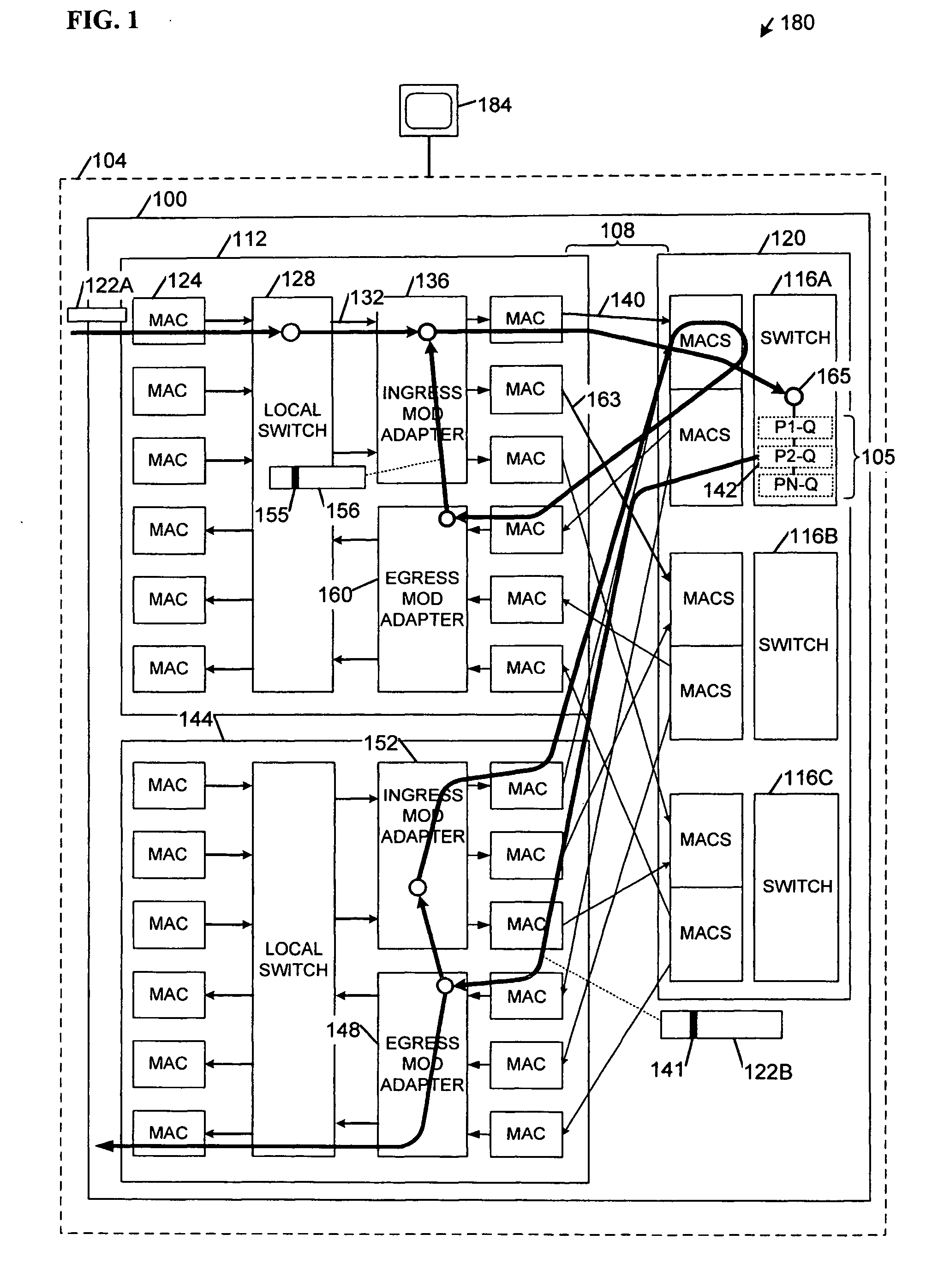Network load balancing apparatus, systems, and methods
a network load and load balancing technology, applied in the field of computer network systems, can solve problems such as inability to consider other aspects of traffic load allocation, and inability to consider existing load balancing methods. to achieve the effect of maximizing the total available bandwidth and avoiding out-of-order reception
- Summary
- Abstract
- Description
- Claims
- Application Information
AI Technical Summary
Benefits of technology
Problems solved by technology
Method used
Image
Examples
Embodiment Construction
[0010]FIG. 1 comprises a block diagram of an apparatus 100 and a system 180 according to various embodiments of the invention. Some embodiments may comprise a network switch 104, including perhaps a dynamically load-balanced switch. Levels of queues 105 inside the switch 104 may be indicative of loading on connections within the switch 104. Thus, an increasing queue size may indicate that a load on a connection utilizing the queue is increasing. Queue levels may result from overall traffic patterns and from a mix of traffic of different priorities from various line cards within the switch 104. Because traffic patterns and the priority mix may change over time, a load associated with a given connection may change. Switching efficiencies may be enhanced if internal load balancing functions dynamically adapt to changes in loads on the internal connections. Ingress and egress points and / or line cards referred to hereinafter are intended to convey a direction of packet traffic flow. That...
PUM
 Login to View More
Login to View More Abstract
Description
Claims
Application Information
 Login to View More
Login to View More - R&D
- Intellectual Property
- Life Sciences
- Materials
- Tech Scout
- Unparalleled Data Quality
- Higher Quality Content
- 60% Fewer Hallucinations
Browse by: Latest US Patents, China's latest patents, Technical Efficacy Thesaurus, Application Domain, Technology Topic, Popular Technical Reports.
© 2025 PatSnap. All rights reserved.Legal|Privacy policy|Modern Slavery Act Transparency Statement|Sitemap|About US| Contact US: help@patsnap.com



